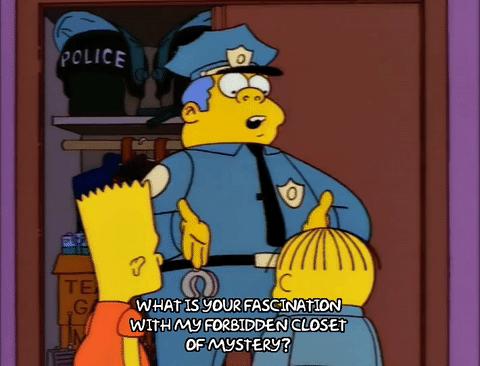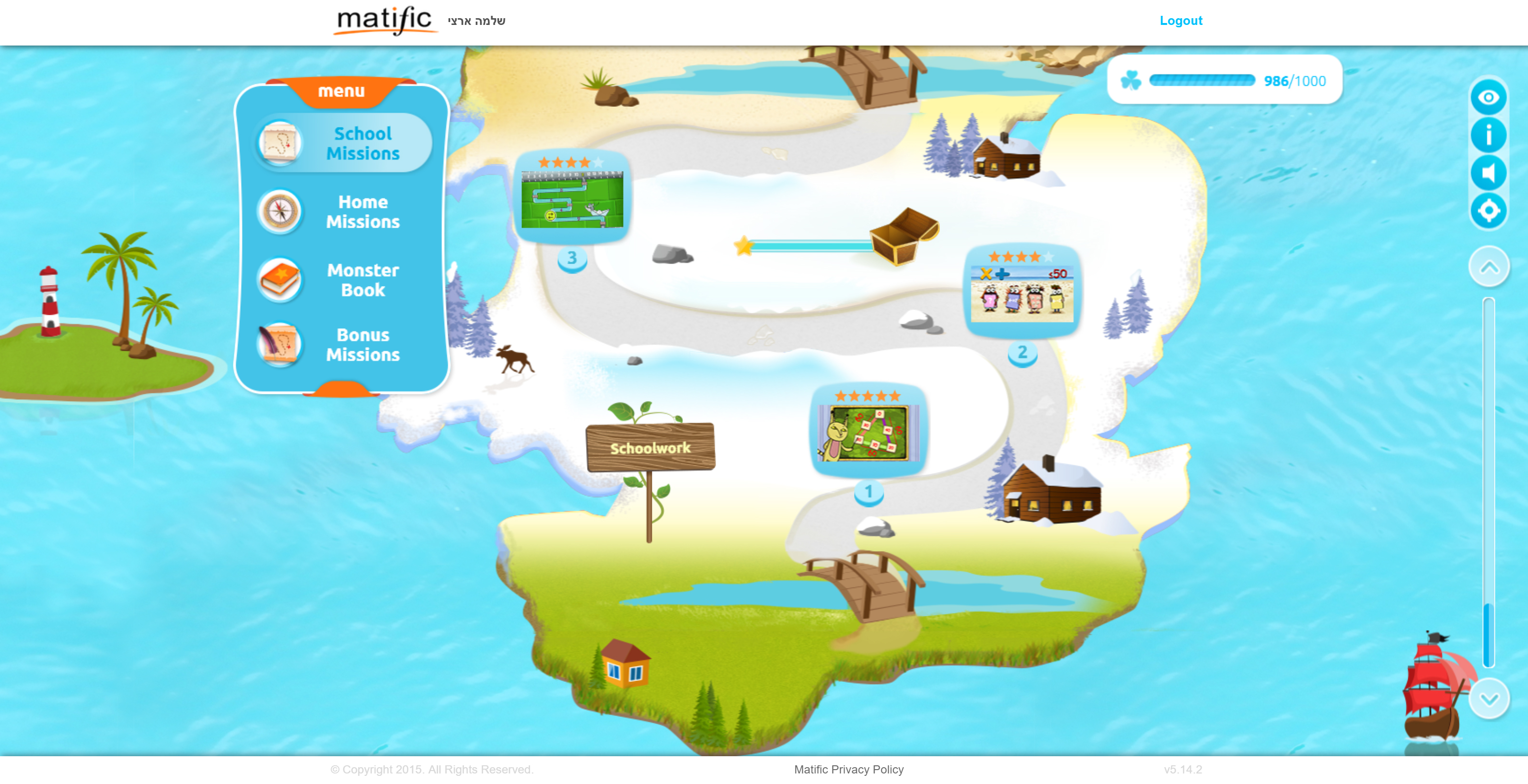Matific is an online math education platform that takes a unique approach to teaching math, using mini-games to convey abstract mathematical concepts. In 2016 I was hired to help Matific make their core product more engaging and more loveable for the students.
The Challenge
During 2012-2016, Matific took on an almost impossible task: to create mini-games (called episodes) for every topic in the K to 6 math curriculum. In less than four years they came up with no less than 400 episodes, spanning almost every math topic your elementary school teacher Gerta could possibly think of.
While effectively positioning themselves as the largest curriculum-based math games portal in the world, this abundance of content brought up a few major challenges.
For obvious reasons, it’s hard to keep the same, high standard for all 400+ episodes, and some fell short in playability and accessibility.
Game mechanics varied between episodes, and valuable class time was spent on trying to figure out how to play a certain episode.
However, the biggest issue was that there was no common thread between all episodes. Nothing to stick it all together in a coherent way.
As a result, episode completion rates were low and retention didn’t meet criteria. We set out to fix it.

One of Matific’s episodes
Solution Part I: Make it Whole!
In order to create a common thread between all episodes, we needed an arc. A world, a theme, and a story to connect all the dots.
We came up with a magical world, inhabited by families of adorable monsters. One day, the world was discovered by a mathemagician, who wanted to keep the finding to himself. Using his black math magic (fractions!) he captured all monsters, locked them in boxes, and encrypted these boxes with math riddles.
In their quest to set the monsters free and unite the families, the students have to tackle and solve these math riddles.
It’s a simple story, one that Kindergarten students can grasp and the bigger children won’t think is silly.
This story allowed us to use different wordings more appropriate to the game theme all across Matific’s website and apps. Math exercises turned to riddles, homework to missions, and students became explorers. These small changes had a big impact on people. If you don’t believe me, you can ask Chief Wiggum from The Simpsons.

Key Takeaway: Every game, app, or service needs a story that puts the user in the middle. Find your story, and make sure it doesn’t stay in the marketing department but boils down to the actual words you use in your product.
Solution Part II: Mid-term goals, collectables, and variable rewards

“Bonus Missions”, previously known as “More Homework!”
Products that are successful in motivating their users to accomplish things in their service usually take the 3 goals method of short-mid-long term.
Long term: The big idea. The greater good. Be in shape, speak a language fluently, run a marathon. Matific ‘s long-term goal was aimed at the teachers: “Teaching Math Made Easy.” Students were not addressed at all.
Short term: The quick wins. Something that gives an immediate, positive feedback. Like completing a daily training session. In Matific, these were the episodes. These only took 1-3 minutes per episode to provide a quick sense of accomplishment for the student.
Mid term: A bigger milestone than the quick win, more accessible than the long-term goal. Complete a 10Km run, for example. Matific lacked this as well.
This is the reason we went for a set collection mechanic in Matific’s new world that would help us in setting new goals for the users. Here they are.
Long term: Collect all monster cards. A big mission that would require solving almost 400 episodes, but somehow less intimidating than “know math.”
Short term: Collect 1 monster card. At the end of each episode there will be one waiting.
Mid term: Unite a family. Families are made of four cards: two parents and two children. To unite a family you have to collect all four. Since monster cards come off randomly after episodes, this doesn’t happen too often. So we’ve introduced another mid-term goal: the mystery box.
The mystery box contains 3 different random monster cards in each “learning bulk.” The bulk is comprised of 1-4 math riddles, depending on how many exercises the teacher has decided to give as classwork or homework. Only after the students have solved each bulk with an average of 4 out of 5 stars per episode, that mystery box would unlock.
The curiosity of “what’s in the box?” highly affected the children’s approach to Matific. Suddenly, they felt motivated to solve as many episodes as possible.
Key Takeaway: There should be long-, mid- and short-term goals in every product that seeks to motivate its users. Can you find yours?
Solution Part III: Show progress and empower slow students

One of the biggest hurdles in learning abstract concepts like math is that you are never too sure of how much you’ve learned and how far you’ve progressed. The old Matific design certainly didn’t help, as the episodes were scattered around the website.
Switching to a map form made much more sense. Suddenly students could see exactly how many riddles they had to solve in a specific quest and how many they had answered so far.
Alas, a new problem occurred, as the map is highly comparable. The gap between the strong students and the slower ones was suddenly evident. This is where the monsters cards came in handy once again.
Like many card collection games, the cards have their own class system. Some cards are common, and some are scarce.
This class system allows Matific to deal rare cards to students who lag behind. So they might not have the biggest amount of cards, but they hold the scarce cards that everybody wants. This creates a healthy vibe in class, where the strong students are hovering around the slow students’ monitors to get a glimpse of the scarce cards. The slower kids enjoy the attention and it further motivates them to keep on with the exercises.
Key Takeaway: Most of the time we do not realise how far we’ve climbed until we look down. Be sure to enable the “looking down” feature to your users by showing them their accomplishments.
Reception
After about a year of work, iterating, and testing, Matific was ready to tell the world about the new design. To get the maximum exposure, Matific took another step toward total gamification and announced a math competition between schools. Whoever got the most monsters and stars would take first place. The contest was launched in Israel and in Australia, and the results were staggering.
– On average, kids played cumulatively over 200 hours in total average play time per week and, taking into consideration new students joining, this meant 90 minutes per day. The top 100 students played over 350 hours in total.
– On average, each student answered more than 240 math questions while playing. That’s more math practice time achieved than with any other booklets.
– In total, students have answered just over 52 million questions.
– Retention improved dramatically, over 70% increase in day-7 retention.
– Most importantly: Both teachers and students have reported a more positive attitude towards math, which usually is a cause for student anxiety.
Plus, some kind words from Matific users…
“I am able to write you this email while they work because they are so engaged and motivated to earn ‘monster cards’. They LOVE the monster card addition and that it’s an island with missions – that narrative really captured their Kindy imaginations! I just heard a student loudly declare across the computer lab, “I’m having fun!” followed by, “I’m good at this!” and another just came running up to tell me, “I gotted more monster card!”.
Overall, the investment had paid off.
Check out Matific’s website here.